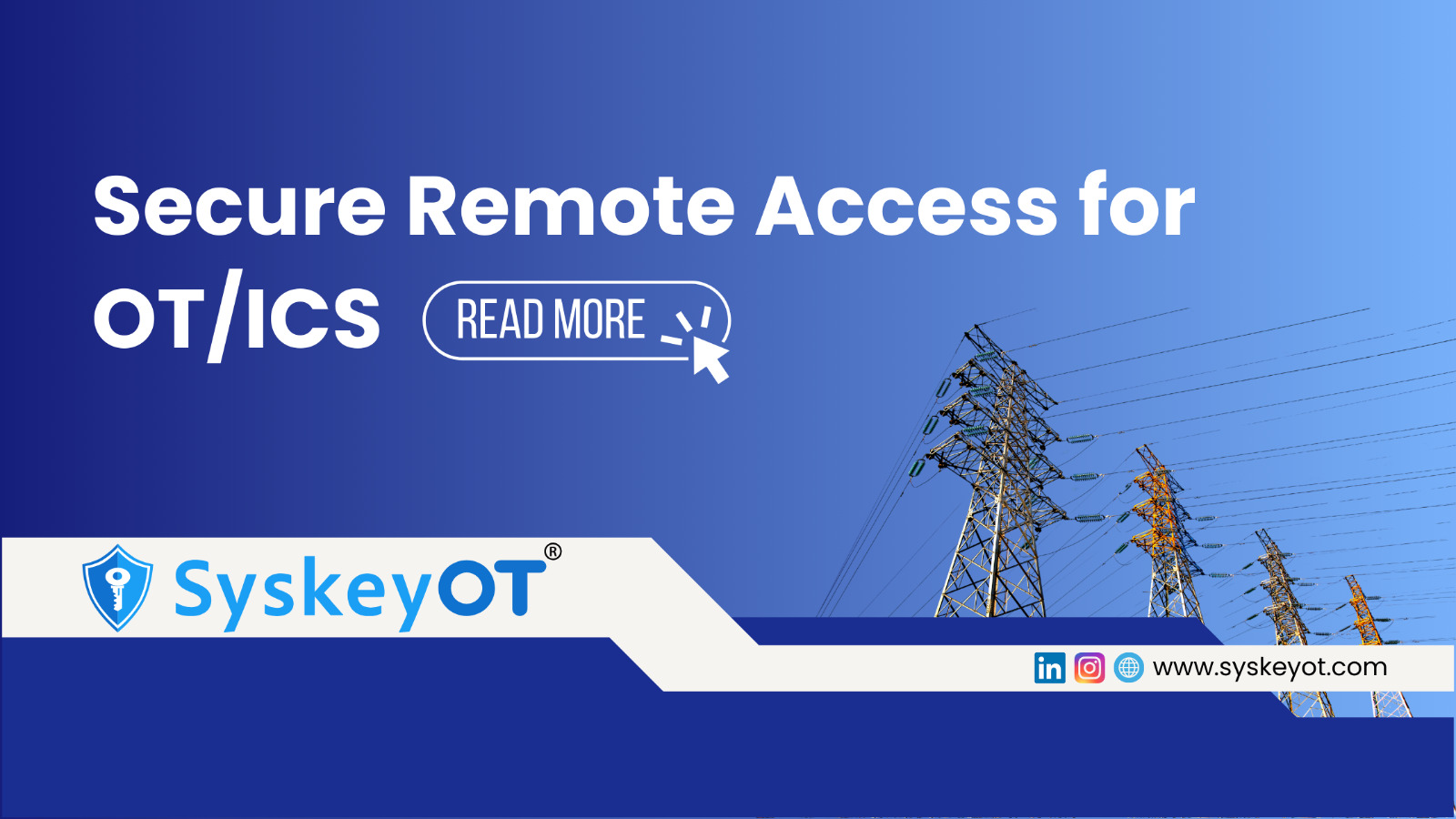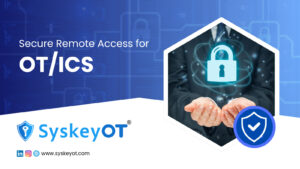Secure Remote Access for OT/ICS
Secure Remote Access for OT/ICS: Industrial control systems no longer operate in isolation. From massive manufacturing plants, power grids, and oil & gas facilities to nuclear stations and water utilities, industrial environments form the backbone of modern civilization. Field engineers and remote support teams increasingly require secure remote access for OT/ICS to troubleshoot, maintain, and update OT systems. While this shift toward remote connectivity improves operational efficiency and responsiveness, it also introduces significant cybersecurity risks if not managed with precision.
OT systems control physical processes where downtime, malfunction, or compromise can lead to safety incidents or service disruptions. The very act of enabling secure remote access for OT/ICS introduces a digital bridge into systems that were once air-gapped by design. And while this bridge improves response time and operational flexibility, it also becomes a high-value target for attackers.
Ensuring that this access remains secure is no longer optional. It requires visibility into who’s connecting, from where, and for what purpose along with the ability to limit access to only what’s necessary, for only as long as needed.
That’s where secure access frameworks and intelligent OT tools come into play.
Why Remote Access in OT/ICS Environments Is High-Risk
Remote access creates a direct bridge into operational networks that were traditionally isolated or air gapped. The following challenges make these environments particularly susceptible to cyber threats and highlight the need for secure remote access for OT/ICS:
Secure Remote Access for OT/ICS: Unverified User Activity
Credential sharing and a lack of role-based access controls can allow unauthorized personnel to access sensitive systems, often without traceability. This unauthorized access controls can be difficult to track, especially when remote users interact with OT systems across dispersed locations. To mitigate this, it’s crucial to monitor access events/logs.
Tools like SyskeyOT’s Scribbler Log Manager help enforce role-based access, continuously monitors system logs and identifies security incidents before they escalate. It helps organizations track and analyze activity control over their OT environment.
Unmonitored Devices
Field engineers may connect via unmanaged laptops that carry unpatched software or hidden malware, opening pathways for attack. These devices could inadvertently introduce security vulnerabilities into the OT environment if not properly controlled.
By implementing SyskeyOT Asset Manager: Real-time OT Asset Status and Performance Monitoring.Enables organizations to manage and secure OT assets efficiently, ensuring that security updates are applied in a controlled manner without causing unexpected downtime, a critical step in ensuring secure remote access for OT/ICS.
Limited Visibility and Logging
In many OT environments, remote access events are not comprehensively logged, making it difficult to detect or investigate breaches. This lack of monitoring can delay the identification of malicious activities, allowing them to escalate without detection.
Centralized logging solutions, such as SyskeyOT’s Scribbler Log Cockpit, provide real-time monitoring and comprehensive visibility into access events. This tool consolidates logs from across the network, making it easy to spot unusual login patterns, failed access attempts, or privileged escalations, and enabling faster, more coordinated responses to potential threats.
Third-Party and Vendor Access
External vendors often require temporary access to OT systems for maintenance or support. However, unless access is actively monitored and revoked after use, it can result in long-term security risks. Persistent access by third parties could provide an attacker with an open door into the OT network.
With SyskeyOT’s Asset Cockpit A comprehensive centralized management solution that provides a unified interface for monitoring and managing OT assets and networks. Designed to streamline operations and improve visibility across multi-site deployments.
A Real-World Example: Colonial Pipeline (2021)
The Colonial Pipeline incident is a clear example of how weak remote access controls can impact national infrastructure. Attackers gained access via a compromised VPN account without multi-factor authentication. The result was a shutdown of the largest fuel pipeline in the United States, leading to widespread operational disruption and economic loss.
While this attack originated in the IT environment, it highlights how insecure access points can serve as gateways into critical infrastructure.
This case underscores the importance of strengthening remote access controls, especially with the tools that SyskeyOT provides. By leveraging Scribbler Log Manager for monitoring access and Asset Manager Real-time OT Asset Status and Performance Monitoring, organizations can reduce the risk of such breaches from both external and internal actors.
Best Practices for Securing Remote Access to OT/ICS
To mitigate these risks and implement secure remote access for OT/ICS, organizations should adopt a structured approach built on the following principles:
Role-Based and Time-Bound Access
Limit access to only what is necessary, for only as long as needed. This minimizes the potential for unnecessary exposure and ensures access is granted based on specific needs.
Strong Authentication
Implement multi-factor authentication and device verification wherever possible. This extra layer of authentication makes it more difficult for unauthorized users to gain access to OT systems.
Centralized Log Collection
Record and monitor all access events in a centralized system for visibility and investigation. Having all logs in one place allows for easier tracking and auditing, reducing the time it takes to detect potential threats.
Network Segmentation
Restrict remote users to specific network zones to minimize lateral movement. By creating clear boundaries within the network, the impact of a potential breach can be contained.
Endpoint Control
Restrict or monitor the devices that can connect remotely, especially those used by contractors or third parties. Unmanaged devices can pose significant security risks.
Secure Entry Points
Use hardened, monitored jump servers as secure gateways for remote sessions. These servers act as a buffer, ensuring that all remote access passes through a controlled and monitored point.
Enabling Secure Remote Access Without Compromising Operations
Securing OT environments against remote access threats is not about restricting access it’s about enabling it safely. With the right tools in place, organizations can maintain operational flexibility while preserving the integrity of their control systems.
SyskeyOT’s suite of tools helps organizations to monitor complete asset visibility, track remote access events in real-time, reduce downtime during maintenance, and support secure remote workflows across distributed sites.
Conclusion
As the demand for remote access to OT/ICS systems increases, so do the associated security risks. These environments must move beyond outdated assumptions of network isolation and implement modern strategies for visibility, control, and response.
With SyskeyOT’s tools, organizations can build the necessary resilience to secure remote access for OT/ICS operations without compromising reliability, safety, or uptime.
In the world of OT security, remote access is no longer an exception. It must be secured by design.



